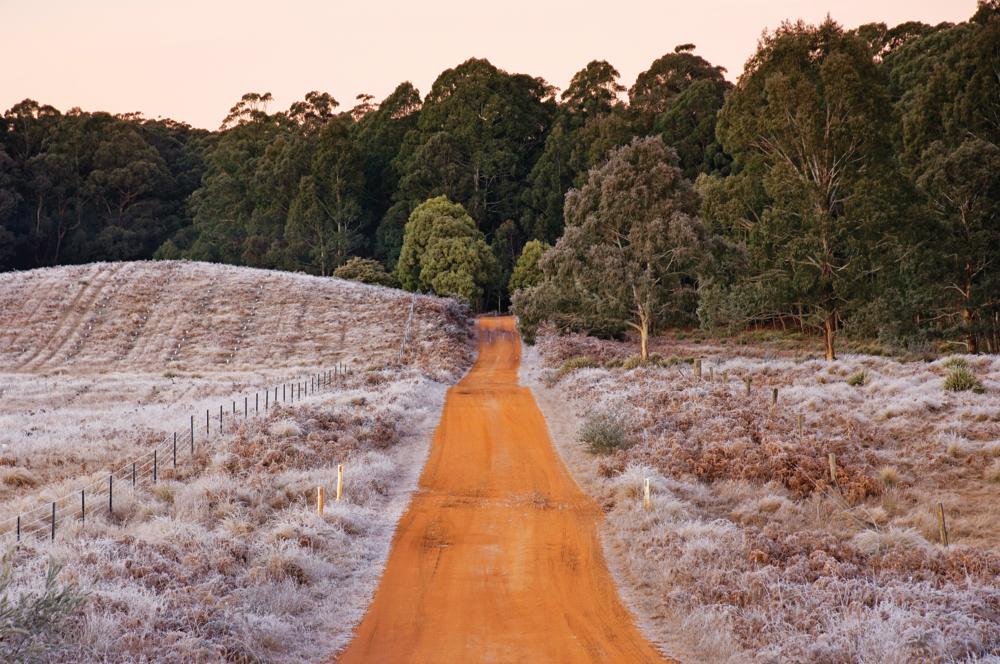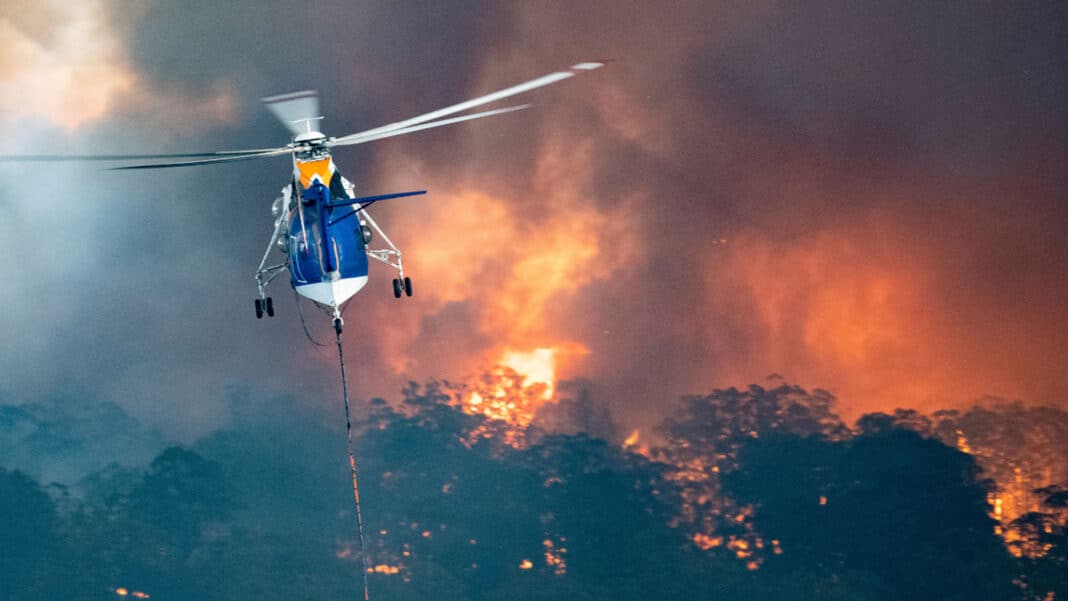Australia should prepare for a “catastrophic 2023-24 bushfire season”, according to three professional foresters who have observed current pastoral conditions across three states. It comes as an ABARES Report published on June 6, 2023, warns of the return of EL Niño weather conditions later this year.
Peter Lear – Forester in Queensland
“We have just returned from a few days driving to Rockhampton, Biloela, Mundubbera, Durong, Dalby, Toowoomba, and the Granite Belt.
“The whole countryside is carrying a body of grass as big or bigger than ever in my memory. It is all fully cured by frost, starting at Mount Morgan. There have been some good frosts all through these regions, and I noticed even the usually-green big grasses, such as Guinea and Hamill, are scorched by frost in many places.
“Throughout the whole journey, I saw only one piece of black ground less than a hectare in size.
“The Granite Belt in particular, with its close rural settlement, comes in for special mention; there are also large areas of native bush throughout this area carrying very large and dangerous fuel loads.
I also heard on a radio news item a few days ago that, I am pretty sure, BOM statistics had recorded the coldest May ever. I’ll bet you won’t hear that on the ABC!
“My dominant thoughts after the journey were that 2023 could end up being a catastrophic fire season, and a mice plague could also be on the cards. If this comes to pass, I don’t think it would take a genius to predict headlines such as ‘unprecedented’ and a result of climate change’.
“I was also speaking to a pineapple farmer mate about this and he told me the next-door farmers had just returned from a pig shooting expedition in western Queensland and reported the same situation all the way to Longreach.”
About Peter Lear
Peter Lear studied forestry at the University of Queensland and the Australian National University, graduating from the ANU with a Bachelor of Science (Forestry). He then worked for the Queensland Department of Forestry from 1971 till 1987 in various areas around the state in managerial positions, including over four years in the Dalby district, which takes in the cypress forests of Queensland. He also spent five years in head office in Brisbane from 1980 to 1985, working on the development and maintenance of the harvesting and marketing systems)’
Roger Underwood – Forester in Western Australia
“The standard image of Australia is one of a parched, dry, searingly hot continent racked by drought and bushfires. But it can be bloody cold and wet, and widescale frosts are far from unheard of – they wipe out sections of the WA wheatbelt every year.
“Yes, good rains periodically fall in the inland. They lead to grass, then frosts lead to cured grass, then come the thunderstorms and lightning and the bushfires. It is a pattern as old as the hills, but as Peter correctly supposes, when it happens next dry season it will be called ‘unprecedented’ and ‘due to climate change’. It’s a pity we can’t get some intelligent journalist to see through this bilge.
“Also, it’s a pity that the people who live in these areas cannot see it coming and get some buffer strips burnt early.
“During the years I was associated with Mount Gibson Station up in the southern Murchison, I reached an understanding of the fire patterns in these open savannah woodlands. Most years there was no fire problem, just bare ground between the clumps of trees. Then there would be a really good winter followed by a mass germination of annuals (including everlastings, very beautiful).
“By the end of October this massive fuel load would be completely cured, and then a summer thunderstorm would get it going. The resultant fires were huge and uncontrollable. Most of the eucalypts in this area are fire sensitive, and would be killed, but this would be followed by wheatfield regeneration on the ash beds, and some coppicing.
“I am talking about the 1970s, ‘before climate change’. Today these fires would, of course, be ‘unprecedented’ and ‘due to climate change’.
“Moreover, if there was no rain, and no mass germination of annuals and no fires, it would be an ‘unprecedented drought’, also ‘caused by climate change’.

About Roger Underwood
Roger Underwood is a forester with 50-plus years’ of experience in bushfire management and bushfire science. He has worked as a firefighter, a district and regional manager, a research manager, and a senior government administrator. He is chairman of The Bushfire Front, an independent professional group promoting best practices in bushfire management. A historian and author, he was recognised for decades of service to forestry and bushfire management in WA and was appointed a Member of the Order of Australia in 2018.
Phillip Cheney – Forester in Victoria
“Thank for your report Peter. My prediction is that these areas will be burnt though northern and central Australia. And while there may not be black now it will start in a month or two and by the end of the 2023-24 fire season the area may well exceed that reported by Luke and McArthur for the 74/75 fire season where they estimated 117 million ha, or 15.2 % of the entire continent, was burnt.
“If anybody is reliably recording satellite imagery, I am sure the total area will be greater because Harry and Alan were making fairly crude estimates, particularly across northern Australia, for areas politely recorded as “protective burning” by graziers and “indefinite areas” in central areas in Western Australia.
“Absolutely no doubt that ‘climate change’ will be the culprit so that the emergency services can become even more luxurious and land managers can safely abrogate any responsibility.”
About Phil Cheney
Phil Cheney grew up in a fishing village on Phillip Island, off the southern coast of Australia. He moved inland to become a forester, taking a diploma in forestry at the Australian School of Forestry in Canberra, and a BSc in forestry at Melbourne University. He has studied wildfires for over four decades and headed the bushfire behaviour and management group at CSIRO for 25 years. He holds the NW Jolly Medal, the highest honour of the Institute of Foresters of Australia (now Forestry Australia).
Deadliest bushfires on record
• Black Summer, July 2019-March 2020: More than18 million ha, 5.4 million alone in NSW. Smoke from the fires was responsible for 450 deaths, while the fires directly caused 26 fatalities, devastating losses for biodiversity.
• Black Saturday, February 7-8, 2009: Some of the worst fire conditions ever recorded in Victoria, causing widespread devastation, 173 fatalities, and the destruction of more than 2000 homes.
• Ash Wednesday, Feb 16-18, 1983: Widespread drought, gale-force winds, high temperatures, and low relative humidity set the scene for a series of fires across Victoria and south-eastern South Australia, resulting in the death of 75 people and the destruction of nearly 1900 homes.
• Black Friday, January 13-20, 1939: Drought conditions and water shortages preceded Black Friday, but the combination of high temperatures, strong winds, and low humidity finally triggered fires throughout bush communities near Melbourne. In all, 71 people were killed, and 650 houses were destroyed. A Royal Commission investigation into the fires increased fire awareness and prevention efforts throughout Australia.
• Black Tuesday, February 7, 1967: An unusually abundant spring covered Tasmanian forest floors with litter, providing excess fuel for the bushfire season. Strong northerly winds and high temperatures coupled to help fuel at least 80 different fires across southern parts of the state, which swept over the southeast coast and came within 2 km of central Hobart. The fires killed 62 people and razed almost 1300 homes.
• Gippsland fires and Black Sunday, February 1-March 10, 1926: Large areas of Gippsland caught fire, culminating in the Black Sunday fires on February 14 that killed 31 people in Warburton, near Melbourne. Over the two-month period, a total of 60 people were killed.







